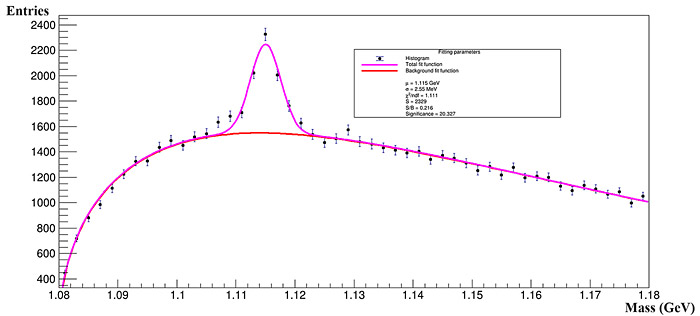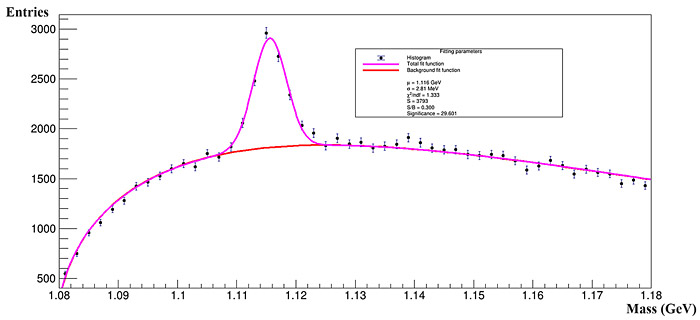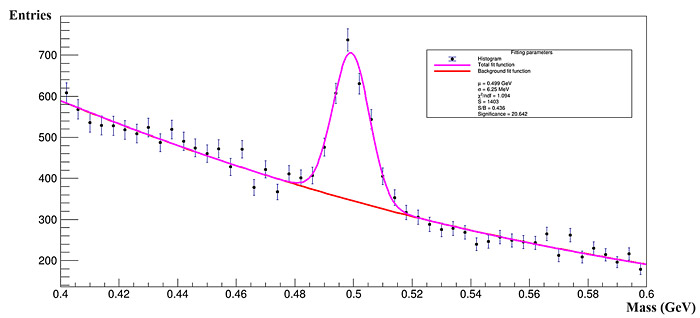
Electronic english version since 2022 |
The newspaper was founded in November 1957
| |
Personal dimension
The future will only get better
Ramin BARAK, an engineer in the Department of Baryonic Matter at the VBLHEP Nuclotron, works in the BM@N (Baryonic Matter at Nuclotron) collaboration. As it is known, this is the first current experiment at the NICA accelerator complex. And although the megascience project has not yet completely started working, several sessions have been carried out at BM@N, the equipment has been modernized and during the record-breaking fourth commissioning session in the history of the NICA complex, statistics on the order of half a billion events were collected. Ramin talks about himself and how data is processed, the goals and objectives of this most important stage of research.
 Before joining JINR, I studied at the Master's programme at National Research Nuclear University MEPhI, specializing in "Elementary Particle Physics and Cosmology". In general, I had heard a lot about the Institute, megascience projects and I was inspired by the idea of uniting both.
Before joining JINR, I studied at the Master's programme at National Research Nuclear University MEPhI, specializing in "Elementary Particle Physics and Cosmology". In general, I had heard a lot about the Institute, megascience projects and I was inspired by the idea of uniting both.
It turned out that for students at JINR there is a START programme (previously called the Summer Student Programme) that provides students with the opportunity to spend 6-8 weeks in Dubna and to engage in research on topics they are interested in. I applied and got into the group of simulation and reconstruction of events in the BM@N experiment. I really liked the task that I did during the START programme, the research team and the city itself, so I decided to dedicate my master's degree to the same topic. And after having finished my master's degree, I got a job at JINR.
The essence of my work is as follows. Relativistic collisions of heavy ions allow to study nuclear matter in states of extreme density and temperature. During such collisions, nuclear matter is heated and compressed in a very short period of time. At sufficiently high temperatures or in the case of a higher density, hadrons "melt" and their components (quarks and gluons) produce the so-called quark-gluon plasma. In high-energy physics, the production of particles with nonzero strangeness in relativistic collisions of heavy ions is a characteristic feature of the production of quark-gluon plasma. I research the issue of reconstructing the parameters of particles with this component (lambda hyperons and neutrally charged k-mesons) in the BM@N experiment.
In February 2023, the first experimental session with a xenon beam (124Xe54+) at the BM@N facility was completed. At the moment, the data processing and physical analysis are underway. To analyze the production of lambda hyperons and neutrally charged k-mesons, not only experimental data were used, but also data obtained using the DCM-SMM Monte Carlo generator. A million events were simulated, particle trajectories were reconstructed, mathematical algorithms for reconstructing the trajectories of lambda hyperons along the decay channel into a proton and a negative pi-meson were developed and implemented in the BmnRoot software package. A similar procedure was performed to reconstruct the trajectories of short-lived neutral kaons along the decay channel into positive and negative pi mesons. The algorithm is based on enumerating pairs of particles with different signs, calculating the invariant mass and imposing a number of geometric restrictions on the parameters of each pair. The figures below show the fitted mass distributions of the decay products of the lambda hyperon and the neutrally charged k-meson based on experimental data and data obtained using the DCM-SMM generator.

Distribution of invariant mass of proton-negative pi-meson pairs based on experimental data. The purple color shows the approximation of the peak of lambda hyperons and the background using the sum of the Gaussian function and the product of the radical function and the exponential. Red - background approximation

Distribution of invariant mass of proton-negative pi-meson pairs on data obtained using the Monte Carlo method

Distribution of invariant mass of positive - negative pi-meson pairs on experimental data

Distribution of invariant mass of positive - negative pi-meson pairs of data obtained using the Monte Carlo method
Each of the figures shows some of the parameters that interest us. Particle mass and width, chi-square/DOF ratio, signal, signal-to-noise ratio and significance. The chi-square/degrees of freedom ratio shows how well a given distribution was profited. The signal indicates how many particles were found in the events considered. The signal-to-noise ratio represents how well the signal is detected compared to the background. Finally, significance demonstrates how reliable the result is. From the figures and after comparing the values of the parameters signal, signal-to-noise ratio and significance, it follows that the final result obtained is worse (that is, the values of all the parameters listed above are smaller) in the case of using experimental data that is to be expected. Monte Carlo generators try to describe specific physics, but they don't do it completely yet. In fact, this is precisely the further goal of my research: "bringing together" the results obtained using the Monte Carlo generator DCM-SMM and experimental ones.
In the near future, I am going to work at VBLHEP on the BM@N experiment. I also consider the possibility of defending my PhD thesis at JINR.
I am very glad that I have made a choice in favor of JINR for my further scientific activities and I am sure that the future will only get better!